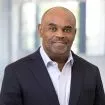On January 11, 2018, the Securities and Exchange Commission's (SEC) Fixed Income Market Structure Advisory Committee (FIMSAC) held its inaugural meeting. The SEC formed the FIMSAC to provide advice to the SEC on the efficiency and resiliency of the fixed income markets and identify opportunities for regulatory improvement.1 The FIMSAC is composed of a diverse group of outside experts, including individuals representing the views of retail and institutional investors, small and large issuers, trading venues, dealers, and self-regulatory organizations, among others.2 The agenda for the first meeting of the FIMSAC focused on the exploration of a variety of bond market liquidity issues.
1. Opening Remarks
In his opening remarks, SEC Chairman Clayton emphasized the significance of the fixed income markets to the US economy and the investing public and, accordingly, the importance of ensuring that the SEC's "regulatory approach to these markets is sound and continues to meet the needs of retail investors, as well as American companies and state and local governments."3 Chairman Clayton stated that the FIMSAC will play an important role in evaluating the SEC's regulatory efforts in the fixed income markets. Commissioner Piwowar applauded the decision to form the FIMSAC and challenged its members to take control of its agenda and use their collective expertise to inform the SEC of the issues that deserve the greatest attention.4 He noted that "fears of possible liquidity shocks persist, and greater depth of analysis is needed to understand what may be appropriate regulatory next steps." Commissioner Stein noted that the fixed income markets, which are vitally important to the US financial system, are "in a period of profound and multifaceted change" and that the FIMSAC will explore what these changes mean for the fixed income markets, including their effect on liquidity.5 Newly appointed Commissioners Jackson and Peirce similarly were supportive of the efforts of the FIMSAC. Finally, SEC Division of Trading and Markets Director Redfearn also supported the greater focus on the fixed income markets and indicated that he looks forward to evaluating the need for any regulatory or deregulatory efforts to enhance the efficiency of the fixed income markets.
2. Bond Market Liquidity Conditions Research
The first panel6 at the FIMSAC meeting explored research regarding the metrics for analyzing liquidity in the bond market and what these metrics mean for liquidity. The panelists noted that the liquidity question is nuanced and that focusing on a particular metric or metrics could lead to ambiguous conclusions regarding liquidity. The panelists discussed the many ways in which the bond market has changed in recent years, including, for example, the growth of agency trading, the rise of alternative liquidity providers, the increasing role of electronic trading, the use of ETFs, and the concentration of investors, and how these changes impact the analysis of liquidity in the bond market.
3. Market Participant Perspectives on Bond Market Liquidity
The second panel of the FIMSAC meeting, composed of buy-side and sell-side market participants,7 discussed their perspectives regarding various topics related to bond market liquidity, including dealer intermediation, electronic trading, ETFs, transparency, and potential policy responses to increase liquidity and the efficiency of the market. With regard to the role of dealers, the panelists recognized the continued role of dealer intermediation but noted the increase in agency trading, more liquidity from the buy side and other alternative liquidity providers, the prevalence of the use of ETFs, and greater reliance on electronic trading as well. The panelists agreed that electronic trading now plays an important role in the bond market but noted that electronic trading in this market will need to continue to evolve to address the different needs of the bond market generally and different segments of the bond market. When asked whether ETFs pose particular risks in times of stress, the panelists agreed that they pose little risk to the market. The panelists agreed that transparency is beneficial to the market but noted that the transparency needed to maximize liquidity for different types of instruments, trade sizes and other trade characteristics may vary. Therefore, panelists recommended that the FIMSAC revisit current requirements to determine whether the timing and extent of transparency are calibrated to ensure that transparency increases liquidity in various circumstances.
The panel concluded with a question from the moderator regarding what policy responses would facilitate liquidity or a more efficient market. One panelist recommended looking at orders that are not being executed or even submitted, and evaluating how to make those trades happen. Other panelists recommended calibrating any policy response to the different needs and characteristics of different aspects of the bond market (e.g., type of instruments, trade size). Another panelist emphasized that pre-trade transparency is the "holy grail" for market participants.
4. Discussion of Bond Market Liquidity
After the panelists provided their insights and research, the FIMSAC members and the panelists discussed various aspects of bond market liquidity, including the issues raised in the earlier panels. For example, the FIMSAC members and the panelists explored whether it would be beneficial to take affirmative steps to incentivize greater dealer intermediation. During the discussion, the panelists and FIMSAC members noted that regulatory efforts should focus on increasing liquidity but that the effort should be broad-based to address the many different ways that liquidity could be enhanced in the markets.
The FIMSAC members and panelists also discussed the benefits of enhanced pre- and post-trade transparency. The participants noted that any such transparency should balance the advantages and disadvantages of providing additional transparency, with a recognition that the requirements (e.g., timing and information provided) may need to vary based on the particular order or transaction type (e.g., the relevant instrument, the size of the trade). For example, participants recognized that block trades and illiquid securities may require different levels of transparency. Certain participants, however, indicated a concern regarding the imposition of overly prescriptive transparency requirements, while another recommended a calibrated pilot program to study the effects of enhanced transparency. One participant noted that the new MiFID requirements would provide data regarding how certain transparency requirements would impact liquidity.
5. Next Steps: Subcommittees
At the conclusion of the meeting, the FIMSAC chairman, with the input of Director Redfearn, preliminarily proposed the creation of three FIMSAC subcommittees for a more detailed analysis of three broad fixed income topics: (1) modernization, which would cover electronic trading and other technology issues; (2) fixed income ETFs, which would consider such topics as open-ended mutual funds and concentration issues; and (3) transparency, which would include an analysis of pre-trade and post-trade transparency. Committee members recommended that the subcommittees consider the different issues raised with regard to retail investors and institutional investors for each of these topics. The subcommittees, each to be staffed with approximately 10 FIMSAC members at a later date, would analyze their assigned topics and report on their recommendations to the full FIMSAC in April of this year. Chairman Clayton concluded the meeting by noting that the SEC recognizes that the US fixed income markets are the envy of the world and that the SEC would be guided by the principle of "do no harm" as it considers the need for any regulatory response.
Footnotes
1 The FIMSAC Charter is available at https://www.sec.gov/files/fimsac-charter.pdf.
The FIMSAC is chaired by Michael Heaney, who retired in 2016 as the global co-head of the Fixed Income Sales and Trading Division at Morgan Stanley and now serves on several boards, including those of Legal and General Investment Management Americas and TP-ICAP, a London-based public company. A full list of FIMSAC members can be found on the SEC's FIMSAC Spotlight web page (available at https://www.sec.gov/spotlight/fixed-income-advisory-committee).
3 Chairman Jay Clayton, Opening Remarks at the Inaugural Meeting of the Fixed Income Market Structure Advisory Committee (Jan. 11, 2018) (available at https://www.sec.gov/news/public-statement/opening-remarks-inaugural-meeting-fixed-income-market-structure-advisory).
4 Commissioner Michael S. Piwowar, Remarks at the Inaugural Meeting of the Fixed Income Market Structure Advisory Committee (Jan. 11, 2018) (available at https://www.sec.gov/news/public-statement/piwowar-statement-fimsac-meeting-011118).
5 Commissioner Kara M. Stein, Remarks to the Fixed Income Market Structure Advisory Committee (Jan. 11, 2018) (available at https://www.sec.gov/news/public-statement/stein-2018-01-11).
6 Michael Heaney, committee chairman, moderated this panel, which included Kevin McPartland, head of market structure and technology research, Greenwich Associates; Jeff Meli, co-head of research, Barclays; and Sonali Theisen, global head of market structure and data strategy, global credit and securitized markets, Citigroup. The background research papers provided by the panelists are available at https://www.sec.gov/spotlight/fixed-income-advisory-committee.
7 This panel was moderated by Brett Redfearn, director, Division of Trading and Markets, and included Paul Jakubowski, global head of credit, Vanguard; Drew Mogavero, head of US flow credit trading, Barclays; Richie Prager, head of trading, liquidity and investments platform, BlackRock; and Jim Switzer, global head of credit trading, Alliance Bernstein.
The content of this article is intended to provide a general guide to the subject matter. Specialist advice should be sought about your specific circumstances.



